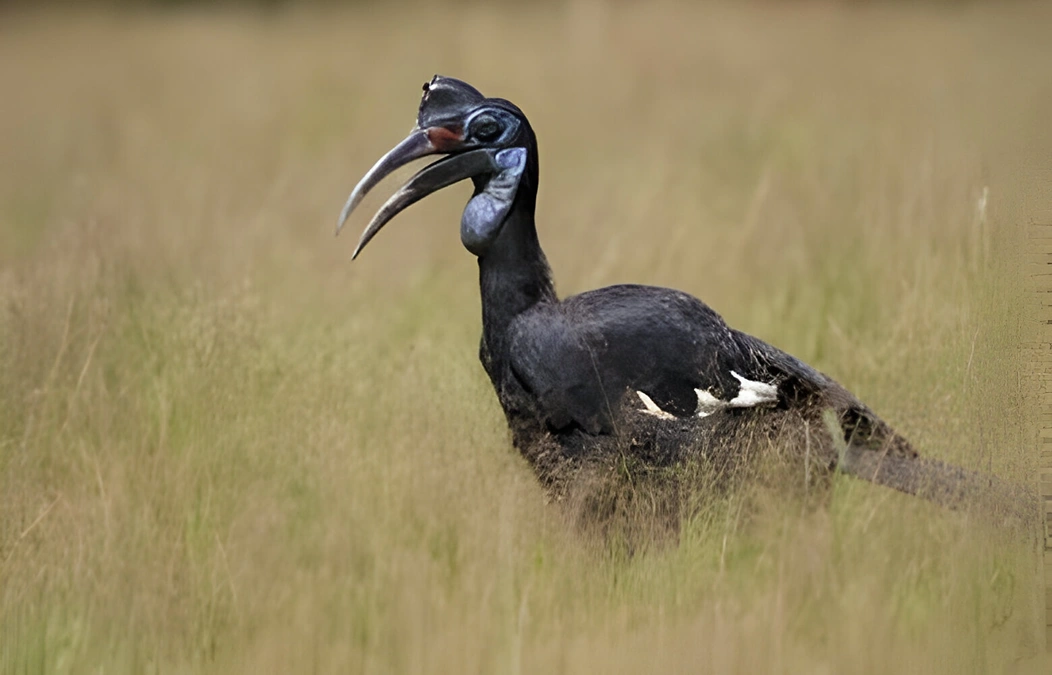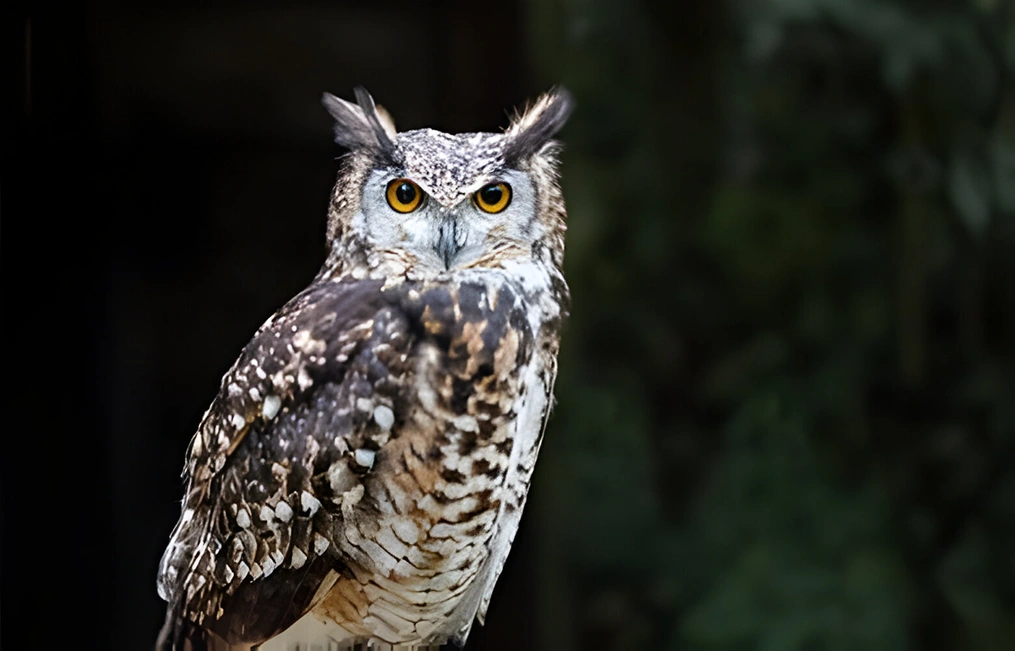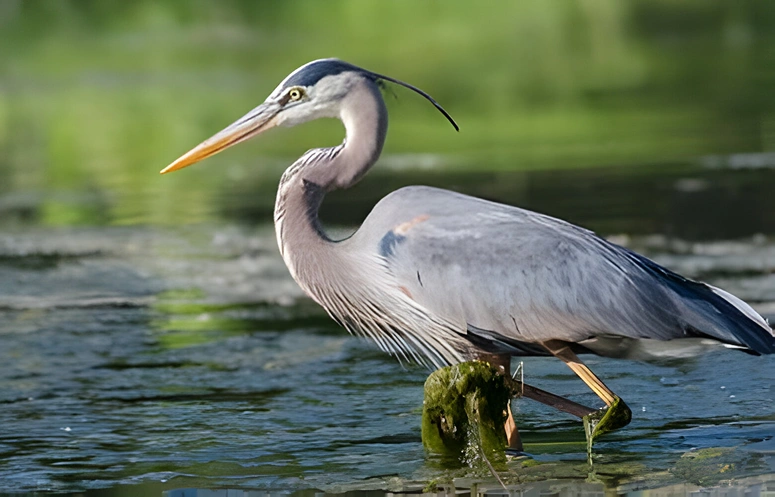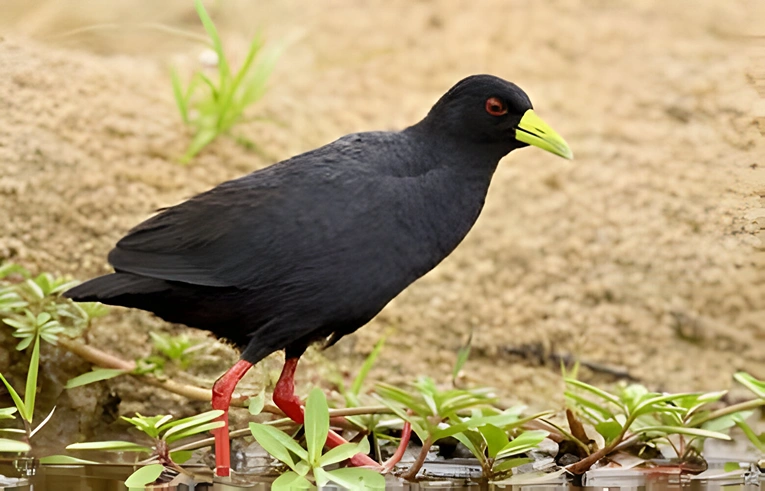Birds Of Senegal And The Gambia
- Ebrima Sidibeh

- Aug 23, 2023
- 12 min read
Updated: May 6, 2024
Key Highlights
· Explore the vital habitats and conservation efforts crucial for protecting these bird populations.
· Learn about seasonal visitors and the significance of wetlands in supporting migratory birds.
· Uncover birdwatching hotspots like the Gambia River and Niokolo-Koba National Park for an immersive experience.
· Delve into the cultural importance of birds and how to get involved in conservation through citizen science projects.
Introduction

Welcome to the diverse avian world of Senegal and The Gambia, where a stunning array of bird species awaits discovery. From the majestic Pelicans of the Bijol Islands to the enigmatic Abyssinian Ground Hornbill, these regions offer a unique birding experience. Explore the diverse birdlife of Senegal and The Gambia, where habitats range from wetlands to savannas.
Introduction to the Birds of Senegal and The Gambia
The diverse avifauna of Senegal and The Gambia offers a captivating tapestry of bird species for enthusiasts and researchers. Renowned for its vibrant array of birdlife, this region attracts bird watchers from around the globe. These countries boast unique and iconic species, from the majestic Pelicans of the Bijol Islands to the enigmatic Abyssinian Ground Hornbill.
Exploring the habitats of these birds provides insights into their behavior, migration patterns, and significance within the ecosystem, making it a must-visit destination for any bird lover interested in the birds of Ghana, Senegal, and The Gambia. This guide will delve deeper into the birds of The Gambia and Senegal, including their habitats, behaviors, and conservation efforts.
Iconic Bird Species of Senegal and The Gambia

The diverse avifauna of Senegal and The Gambia includes iconic species that captivate birdwatchers worldwide. Among these, the majestic Pelicans of the Bijol Islands stand out with their graceful flight and distinctive appearance. Another notable bird is the enigmatic Abyssinian Ground Hornbill, symbolizing the region's rich biodiversity. One of the most iconic and recognizable birds in Senegal and The Gambia is the African Jacana, known for its unique and impressive ability to walk on floating vegetation.

Another iconic bird species in Senegal and The Gambia is the African Crake, a small and elusive bird that can be spotted in wetlands and grasslands. One more iconic bird species that can be found in Senegal and The Gambia is the bearded barbet, known for its vibrant colors and distinctive bearded appearance. These iconic birds add to birdwatching's allure and play a crucial role in the ecosystem of Senegal and The Gambia.
If you would like to book your trip, Please contact us with the Gambia Bird Tour.
The Majestic Pelicans of Bijol Islands

The Bijol Islands are a haven for the majestic Pelicans, showcasing their grace and elegance. These large water birds with long legs and a wingspan reaching up to 12 feet are a sight to behold. Commonly seen in coastal and inland waters, these Pelicans sport black plumage with white accents, notably during the breeding season. Observing them in flight, with their broad wings gracefully gliding over the azure waters, is a true delight for bird enthusiasts. The Bijol Islands serve as a vital habitat for these magnificent birds, adding to the allure of this picturesque destination.
The Enigmatic Abyssinian Ground Hornbill

Abyssinian Ground Hornbill captivates birdwatchers in Senegal and The Gambia. Known for its distinct black plumage and long legs, this bird of prey is a true marvel to observe. With its impressive size and distinctive features, including broad wings and captivating bright yellow throat, the Abyssinian Ground Hornbill stands out in the avian world. As a key species in the region, efforts to conserve and protect this enigmatic bird, along with other hornbill species such as the African grey hornbill, African pied hornbill, African stonechat, and capuchin babbler, are crucial for maintaining the biodiversity of these habitats.
Birds Unique to Senegal and The Gambia
The avifauna of Senegal and The Gambia boasts several remarkable species exclusive to this region. Among them are the striking Sunbirds, captivating with their vibrant hues and crucial pollinators in the ecosystem. Delve into the realm of rarities and endemics, encountering extraordinary bird species found solely in these West African countries, showcasing the unparalleled biodiversity within the region. These unique avian treasures underscore the significance of conservation efforts to safeguard their existence.
If you would like to book your trip, Please contact us with the Gambia Bird Tour.
The Beautiful Sunbirds and Why They Matter
Endemic to Senegal and The Gambia, the vibrant Sunbirds play a crucial role in pollination and seed dispersal, supporting ecosystem health. Their iridescent plumage and long, curved bills are adapted for nectar feeding, influencing plant diversity. By ensuring cross-pollination, Sunbirds contribute to reproducing numerous flowering plants and maintaining biodiversity. Additionally, their presence enhances the aesthetic appeal of these regions, attracting ecotourism and fostering conservation awareness. Sunbirds epitomize the interconnectedness of species within these West African ecosystems.
Rarities and Endemics: A Closer Look
The region of Senegal and The Gambia hosts a variety of rarities and endemics that captivate bird enthusiasts. These unique species, such as the Golden Nightjar and Egyptian Plover, are exclusive to this area, including Cape Verde and Micronesian Shearwaters, Desert Eagle Owl, Caprimulgus natalensis (A), Kordofan Lark, Quailfinch Indigobird, and the elusive Little Grey Woodpecker, Caprimulgus climacurus. These birds contribute to the rich biodiversity in this part of West Africa, making them a must-see for any birdwatcher. Exploring the habitats where these rarities thrive offers a remarkable opportunity to witness nature's hidden gems.
Seasonal Visitors: Migratory Birds of Interest
Migration in Senegal and The Gambia attracts a range of Western Palearctic migrants annually. The Osprey, with its distinct plumage and impressive fishing skills, is a common sight among them. European Bee-eaters add a vibrant touch with their colorful appearance during the breeding season. African singers, such as the Green Crombec, Northern Crombec, and Moustached Grass Warbler, also make their seasonal journey to the region, enriching the avian diversity and making bird watching even more rewarding.
One fascinating migratory bird to look for is the African Pied Wagtail, known for its distinctive black and white plumage and lively behavior. Another notable visitor is the black crake, a small and elusive bird near wetlands and marshes. Understanding their migration patterns and behaviors, such as the annual journey of the African silverbill, offers a unique insight into the interconnectedness of global bird populations.
Understanding Migration Patterns
Migratory birds of Senegal and The Gambia exhibit fascinating migration patterns, moving seasonally in search of suitable breeding grounds or favorable climates. These birds, like the Osprey and European Bee-eater, travel vast distances, crossing continents and facing various challenges. Understanding these migration patterns is crucial for conservation efforts, as protecting key stopover sites and flyways is essential for the survival of these species. Researchers can ensure these migratory bird populations' long-term health and sustainability by monitoring and comprehending these movements.
Spotlight on the Osprey and European Bee-eater

The Osprey, a magnificent bird of prey, is a master fisherman found near water bodies worldwide. Their long legs and wings help them dive effortlessly to catch fish. Interestingly, ospreys have a reversible outer toe that aids in gripping slippery prey. On the other hand, the European bee-eater is known for its vibrant plumage and unique feeding habits. The appearance of these brown birds, with the Osprey being a large and powerful bird and the European bee-eater being smaller and more colorful, is highly varied. These migratory birds travel impressive distances to catch bees and other flying insects, showcasing remarkable aerial agility.
Wetlands and Waterbirds: A Vital Ecosystem
Nurturing a delicate balance, wetlands serve as crucial habitats for diverse waterbirds essential to Senegal and The Gambia's biodiversity. The Senegal River Delta is a haven for iconic species like elegant flamingos, majestic herons, and graceful egrets. These wetlands provide shelter and are crucial feeding grounds for these avian wonders, underlining the intricate relationship between waterbirds and their freshwater habitats. Protection of these vital ecosystems is paramount to ensure the survival of these magnificent avian populations.
The Significance of the Senegal River Delta
Located in the heart of Senegal, the Senegal River Delta is essential for birdlife. This unique ecosystem is a crucial habitat for various bird species, including waterbirds and migrants. The delta's intricate network of wetlands provides vital feeding and breeding grounds for numerous avian populations. Its rich biodiversity and ecological significance make it a prime destination for birdwatchers and conservationists. Protecting the Senegal River Delta is essential for preserving the region's avifauna and ensuring the well-being of these feathered inhabitants.
Key Species: Flamingos, Herons, and Egrets
Flamingos, herons, and egrets are critical species in the wetlands of Senegal and The Gambia. These elegant birds play crucial roles in maintaining the balance of these ecosystems. Flamingos are a sight to behold with their vibrant plumage, while herons exhibit grace in their foraging skills. Egrets, known for their distinctive long legs and delicate appearance, contribute to the ecosystem's biodiversity. Observing these birds in their natural habitat, including the elusive and rare Botaurus stellaris or Great Bittern and the majestic Gray Heron, Ardea cinerea, is an enriching experience for birdwatchers and conservationists alike. These birds are easily recognizable by their strong legs and unique big toes, which aid their foraging and walking on various terrains.
Birdwatching Hotspots: Where to Go
For avid birdwatchers, Senegal and The Gambia offer unparalleled opportunities to observe various avian species in their natural habitats. Some notable hotspots include the Gambia River and surrounding areas, renowned for their rich birdlife, and Niokolo-Koba National Park, a true paradise for bird enthusiasts. These regions are teeming with many bird species, providing ample opportunities for memorable sightings and stunning photography sessions.
If you would like to book your trip, Please contact us with the Gambia Bird Tour.
The Gambia River and Surrounding Areas
The Gambia River and its surroundings host diverse bird species, drawing birdwatchers worldwide. From vibrant sunbirds to majestic raptors like the Martial Eagle, this region offers a unique opportunity to observe birds in their natural habitat. The river's wetlands attract water birds like flamingos, herons, and egrets, creating a picturesque setting for birdwatching enthusiasts.
Niokolo-Koba National Park: A Birder's Paradise
Niokolo-Koba National Park in Senegal is a birder's paradise, boasting diverse bird species in a stunning natural setting. Home to numerous Western Palearctic migrants and unique residents like the Egyptian Plover and Golden Nightjar, this park offers a rich bird watching experience. From the impressive Martial Eagle to the charming Splendid Starling, the park is a haven for bird enthusiasts. Its varied habitats, including savannas and forests, make it an essential destination for any birdwatcher seeking memorable avian encounters, including the elusive black coucal.
Photography Tips for Birdwatchers
Invest in a quality telephoto lens for optimal bird photography to capture birds from afar without disturbing them. Patience is vital; be prepared to wait for the perfect shot. Consider using a tripod for stability and sharper images. Set your camera for optimal lighting and fast bird movements. When taking photos, ensure ethical practices by avoiding disturbances to nests or natural behaviors. Study bird behavior to predict their actions for the perfect shot. Always prioritize respect for nature.
Best Practices for Ethical Bird Photography
When capturing wildlife images, it's crucial to maintain a respectful distance to honor their habitats. Ensure you don't disrupt their natural behaviors or nesting areas. Avoid tempting them with bait or causing unnecessary stress for a photo opportunity. Remember, prioritizing the welfare of these creatures over obtaining the ideal shot is paramount. Familiarize yourself with local regulations and ethical guidelines from reputable organizations. Use your lens to raise awareness and appreciation for these creatures, advocating for their conservation through your art.
Equipment Recommendations for Beginners
The right equipment is crucial when starting your birdwatching journey in Senegal and The Gambia. For beginners, a good pair of binoculars is a must-have. A field guide specific to the region, like those by renowned authors Ron Demey and Nik Borrow, can be essential for identifying the diverse bird species you'll encounter. Consider investing in a lightweight, versatile camera to capture memorable birdwatching moments.
Critical Habitats and Their Importance
The critical habitats of Senegal and The Gambia sustain diverse bird populations. These habitats are crucial for resident and migratory birds, emphasizing the need to protect these delicate environments. Conservation efforts focused on these critical habitats are paramount to safeguarding the rich avifauna found in this region.
Conservation Efforts and Challenges
Numerous conservation efforts are underway in Senegal and The Gambia to protect the diverse avifauna. Organizations like BirdLife International prioritize habitat preservation and awareness-raising. Significant threats, such as habitat loss from human activities and climate change, are being addressed. Collaborative efforts focus on sustainable practices and involving communities to mitigate these challenges. Despite ongoing efforts, additional resources and support are necessary to ensure birds' long-term survival in Senegal and The Gambia.
Conservation in Action: Success Stories
In Senegal and The Gambia, notable success stories in bird conservation have showcased the power of community-based initiatives. Through collaborative efforts and education, local populations have embraced bird protection. Reintroduction programs have also significantly impacted the population of threatened species, such as the Egyptian Plover. These initiatives safeguard avian biodiversity and contribute to the overall health of ecosystems in the region.
Community-Based Conservation Initiatives
Community-based conservation initiatives play a vital role in safeguarding the diverse bird species of Senegal and The Gambia. These efforts engage local communities in preserving natural habitats and increasing awareness about biodiversity.
Reintroduction Programs and Their Impact
Reintroduction programs are crucial in restoring bird populations in Senegal and The Gambia. These initiatives aim to reintroduce endangered species into their natural habitats, helping to increase their numbers and genetic diversity. Conservationists can evaluate the effectiveness of these programs and make informed decisions for future efforts by closely monitoring their outcomes. These initiatives affect numbers and significantly contribute to the region's overall ecosystem health and biodiversity.
The Role of Birds in Local Cultures

Birds have long held significant roles in the cultures of Senegal and The Gambia. From symbols of luck to divine messengers, these feathered creatures feature prominently in folklore, traditions, and even traditional medicine practices. For instance, in some local beliefs, certain birds are considered omens, foretelling events, or guiding decisions. Bird motifs also weave through local art, crafts, and storytelling, showcasing the deep-rooted connection between the avian world and the region's cultural tapestry.
Birds in Folklore and Traditional Medicine
Birds in Senegalese and Gambian folklore hold significant cultural value, often intertwined with traditional medicine practices. For example, the African Sacred Ibis is revered for its perceived connections to the divine realm and healing properties. Similarly, the Martial Eagle symbolizes strength and protection in local beliefs. Understanding these symbolic associations enhances our appreciation for the deep-rooted relationship between birds and the region's cultural heritage.
Bird Motifs in Art and Craft
Bird motifs hold significant cultural symbolism in art and craft, embodying freedom, beauty, and spirituality. From intricate wood carvings to vibrant paintings, birds are a common theme in traditional crafts of Senegal and The Gambia. These motifs often reflect the close relationship between humans and nature, showcasing the reverence for avian species in local communities. Artisans skillfully integrate bird designs into textiles, pottery, and jewelry, creating stunning pieces celebrating the region's rich birdlife.
Contributing to Local Bird Conservation Efforts
Engaging with local bird conservation efforts is paramount in safeguarding the avian diversity of Senegal and The Gambia. Organizations like the Senegal Ornithological Society can offer valuable insights and opportunities for active involvement.
Making a difference is possible through contributing to habitat preservation, participating in bird monitoring programs, and raising awareness about conservation. Through collective action and support, everyone can play a role in protecting the rich birdlife of these regions.
Planning Your Birdwatching Trip
When planning your birdwatching trip to Senegal and The Gambia, consider visiting during the dry season from November to April for optimal birding opportunities. Essential gear includes a quality pair of binoculars, a reliable field guide focusing on birds of Western Africa, and comfortable clothing and footwear for long days outdoors. To enhance your experience, hiring a knowledgeable local guide can help you spot rare species and navigate the best birding spots: pack sunscreen, insect repellent, and a reusable water bottle for sustainability.
If you would like to book your trip, Please contact us with the Gambia Bird Tour.
Best Times to Visit
The best times to visit the birds of Senegal and The Gambia are during the dry season from November to April. This period allows for optimal birdwatching conditions with comfortable temperatures and reduced rainfall, making spotting various bird species in their natural habitats easier. Migratory birds are also present during this time, adding to the overall diversity of avian species that can be observed. Plan your trip accordingly to make the most of your bird watching experience.
If you would like to book your trip, Please contact us with the Gambia Bird Tour.
Essential Gear and Preparation Tips
Essential gear can enhance your experience when birdwatching in Senegal and The Gambia. A quality pair of binoculars, a reliable field guide by renowned authors like Ron Demey and Nik Borrow, and comfortable clothing for long outings are must-haves. Carrying a camera is advisable to capture memorable moments with birds like the Golden Nightjar or Egyptian Plover. Additionally, familiarize yourself with common bird species beforehand to enrich your observations. Proper preparation ensures a rewarding bird watching excursion.
Conclusion
Birdwatching in Senegal and The Gambia offers a unique experience for enthusiasts and conservationists. With diverse habitats and iconic species like pelicans and Abyssinian Ground Hornbills, these regions are a paradise for bird lovers. Conservation efforts are essential for safeguarding the diverse birdlife of this area. Individuals can help preserve these winged wonders for future generations by exploring hotspots and joining citizen science projects.
Frequently Asked Questions
What is the best time of year to see migratory birds in Senegal and The Gambia?
The best time to see migratory birds in Senegal and The Gambia is during the winter months, from November to February. This period coincides with the arrival of various bird species escaping the harsh European winter, and birdwatchers flock to witness this spectacular migration phenomenon.
Are there any endangered bird species in the region?
Certain bird species in Senegal and The Gambia, such as the Egyptian Vulture and the Martial Eagle, are endangered due to habitat loss and poaching. Conservation efforts are vital for safeguarding these magnificent birds.
Can tourists participate in local conservation efforts?
Tourists can participate in local conservation efforts by joining ecotourism initiatives, volunteering for wildlife monitoring programs, and supporting community-based projects. Engaging in these activities enhances the travel experience while also helping to preserve biodiversity.
What are some bird watching etiquette tips to follow?
Show respect for wildlife habitats by refraining from disturbing nests or natural environments. Maintain low noise levels and avoid sudden movements. Stick to designated paths to minimize your impact. Be considerate of other birdwatchers and share viewing spots courteously.



















Comments